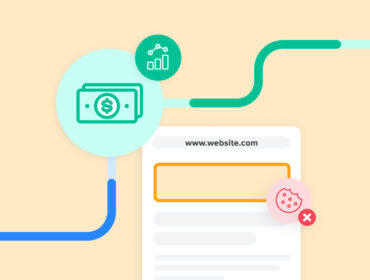With the identity crisis looming, do publishers and marketers have their head in the sand?
In Q4 2020, LiveIntent commissioned a study that examined how marketers and publishers are preparing for the third-party cookie’s end. We polled more than 200 senior marketers and publishers from mid-to-small sized firms. The results showed a startling lack of urgency and preparedness from our industry despite the tsunami of change quickly headed our way.

According to survey results, 39 percent of respondents said they have no plan in place for addressing a cookieless world. Of the 61 percent of respondents who do have a plan in place, nearly half (48 percent) don’t have confidence in it.
Digital advertising and marketing have long depended on the cookie to drive personalized, targeted advertising, and relevant online experiences. Marketers and publishers need to pivot their strategies from a world with cookies to one without—and soon. Unfortunately, building an identity framework is not turnkey; it requires collaboration across silos, including advertising, marketing, engineering, and product. It demands the consolidation of identity data, like email and CRM, and marketing data, like first-party cookies, and the storage of that data and its deployment across CDPs, DMPs, DSPs. Publishers and marketers must have difficult strategic conversations about using available assets to create a tool for resolving audience identity before it’s too late.

To date, 82 percent of respondents have had less than five meetings about the subject, yet 87 percent of respondents feel they will have an identity solution in place within a year, suggesting there will be much cramming in the months to come. However, this is at odds with the fact that 64 percent of respondents are at least somewhat concerned about the future of advertising as it relates to the phasing out of the third-party cookie.

This change, although chaotic, does present opportunities for brands and publishers to control their destiny in an era of third-party cookie deprecation. With a combination of first-party data and the power of email with a forward-looking identity framework, brands and publishers can enjoy all the features, functionalities, and profit of the walled gardens on their own properties. However, to accomplish this outcome, the industry must act with urgency.
Most respondents understand the replacement for the third-party cookie will be a combination of assets. The three most significant assets that respondents believe will solve for marketing in an identity-ruled future are:
- The email address (29 percent)
- First-party data collected directly by the publisher (25 percent)
- The Universal ID 2.0 that The Trade Desk, alongside companies like Index Exchange, LiveRamp, Criteo, Nielsen, and Magnite, are rolling out (22 percent)
The survey found that a plurality of respondents understood email to be a key to identity (as an asset used to bring personalization and resolution to online inventory) and monetization in the form of delivering highly effective ads within the logged-in email newsletter channel. More than one-third (34 percent) of respondents felt email was most important for identity and monetization, 30 percent felt it was most important solely as a monetization tool, and 27 percent felt it was most important as an identity tool.

“There’s no doubt that there will be many approaches to identity as a new era takes hold,” said Kerel Cooper, SVP Global Marketing of LiveIntent. “Different entities will have different, proprietary solutions to match their organization’s needs and assets for building identity frameworks. Regardless of how each publisher or advertiser approaches identity, the key is to bridge the ecosystem for their first and third-party data using media assets they already own and control. This way, publishers and brands can control their destinies using the hard-earned assets they’ve won themselves in pursuit of compelling content.”
Whether you’re a publisher or marketer, be sure to ask these questions as you begin to consider identity solution providers:
- Does the solution put my customers first?
- Where does the provider source their data?
- What are the recency and frequency of the provider’s linkages?
- What is the provider modeling?
- Does the identity graph they offer help me achieve my goals?
Here at LiveIntent, we’re continually committed to helping you meet your goals—cookies or not. Learn how we’re investing in the future of digital marketing by bridging the gap between today’s cookie-first world and tomorrow’s cookieless future. Have questions? Let’s chat.


